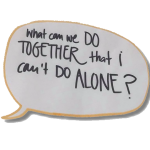Designing Deep Dialogue
how one conversation becomes a conference
By Dee Brooks
International Community Design Thinker; trainer, host, blender, jester, hugger, nomad
This piece is inspired by Alison Mathie, Coady Institute, Canada who suggested, in 2015 after the ABCD Festival in Blackpool UK, that I write this to share with others… It’s been a while…
Introduction
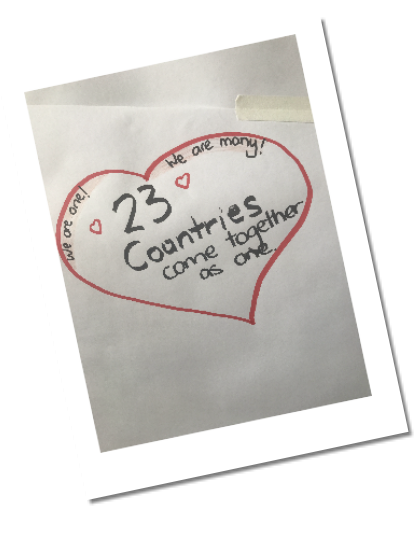 I’ve been an Intentional Nomad for over 3 years now and to date, participatory co-designing of meetings, forums, conferences and events is the work that stretches me! Due to not having a physical address or community who I live amongst, I have discovered a few ways to strengthen my own global community while supporting others.
I’ve been an Intentional Nomad for over 3 years now and to date, participatory co-designing of meetings, forums, conferences and events is the work that stretches me! Due to not having a physical address or community who I live amongst, I have discovered a few ways to strengthen my own global community while supporting others.
Most importantly, this work offers the opportunity for others to learn and explore the borders and boundaries of a variety of methodologies and grow from the experience by exploring other complementary intersections. Many of the challenges faced by individuals and communities require transformational change and by focusing on the strengths already found within communities and by inviting people into meaningful dialogue around the topic or challenge, governments, services and agencies have a much better chance of gaining traction, leading to deeper action.
Designing international gatherings across multiple time zones is as thrilling as it is challenging. Over almost 2 decades of delivering training and facilitation for governments, agencies and community groups around the world, I have watched, listened, sensed, learned and developed ways to weave a range of strengths-based approaches. This work is grounded in the grassroots, strengths and asset based skills I have learned, taught and exchanged with others. In addition, facilitation, hosting and training are 3 significantly different styles of working, which can often interweave, and this blog is reflecting on facilitation and hosting only.
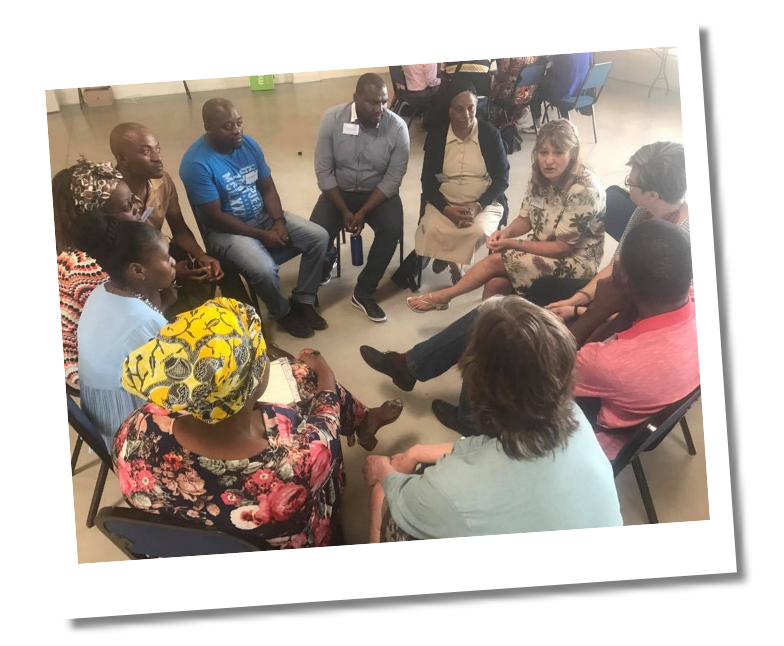
Through both co-design and collaboration processes, my purpose is to guide others in design to build their local capacity, and to co-facilitate small to large groups, to support the shift of individual and organisational dialogue towards collective action, particularly blending Asset Based Community Development’s (ABCD) and Participatory Leadership (Art of Hosting) patterns, practices, processes and principles.
Note: The models described below are all from stand-alone methodologies of which patterns and elements have been adapted and tailored for each unique design.
Design Background:
I’m often contacted to specifically host a community conversation or to facilitate an organisational strategic, visioning or planning session. Others might have a vague idea about a challenge &/or issue they would like to address in their community and others have intentionally called me in to lead the programme design of a larger forum or conference.

The Starting Point:
First, we discuss what’s being called for, what is already in planning or what the community or organisation is sensing is needed. There are times when an organisation, for example, might contact me to inquire about a day of community building facilitation for staff and after our initial conversation, they decide instead to host a broader, more inclusive community conversation in relation to their organisation’s community work. Some example of the work undertaken is:
- Organisational gatherings/retreats

- Staff and team meetings
- Family and community work programmes
- Community Conversations or forums
- Conferences, gatherings and other events
Each design is unique, depending on; individual and community skills and abilities, what’s needed, budget and availability. The timeframes are adjusted according to this and could be one-hour sessions, three-day events, a multi-year programme or anything in between.
The first questions I might ask an organiser, committee or host are:
- Tell me the story that brought you to where you are now… (Why do you want to do this?)
- What do you see as your end goal or outcome? (What do you hope to gain?)
- Would you, your staff or community members you know, be willing to join an organising team to offer their local knowledge, wisdom, experience, skills and abilities? (What can you offer?)
- Who else is not around the table? (This question has multiple angles and I encourage people to talk about ALL community members they know, not just services, agencies or professionals)
- Who is already talking about this specific topic, in any sector?
- Who are the movers and shakers, in this community, who might have a keen interest in being involved
- Who are the people currently affected by this topic or challenge?
At the conclusion of the first call, I encourage the organiser/host to invite anyone they mentioned who is also passionate about this topic or challenge into the next conversation where we will form our Core Group and start the deeper design and planning.
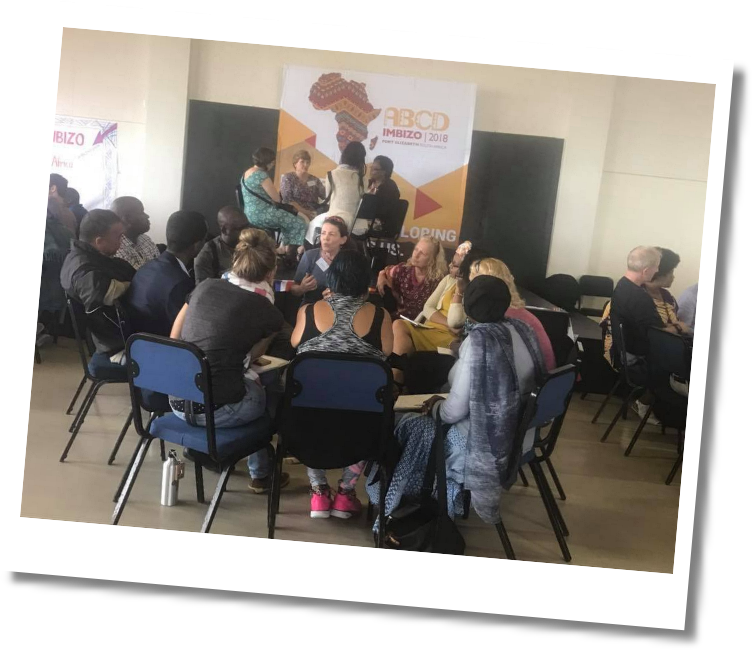 Core Group Conversation:
Core Group Conversation:
The second series of questions is when we have expanded our Core Group and then the focus becomes more about the “what” and the “how”. The groundwork (local) team is organised by the local host, except for long-term programmes.
Groundwork and logistics team tasks:
- Venue scoping; location, times/dates, accommodation
- Catering needs; locally sourced, dietary requirements, eating together
- Obtaining funding/support
- Other locally based tasks
The Design Detail:
For the programme design team, we draw on people’s strengths and discover what they are willing to offer. There is a flow to follow and some collective choices to make as we begin design.
Programme design team tasks:
- Underpinning framework
- Participatory; patterns, practices, processes, principles
- Overall Flow (beginning, middle, end)
- Powerful questions
- Journeying together; tipping point
- Outcome/Harvest
The Layers
I’m a visual thinker/learner and I visualise dialogue in multi-layered patterns. In planning with a Core Group, we start with a foundational framework discussion and from there, we start to build and layer the processes and questions onto the foundation until we achieve a reciprocal, co-designed format.
- Underpinning framework
- What’s the purpose/outcome?
- Why choose one over the other?
- Tools and processes
- What tools are most participatory and useful for this context?
- Keep it spacious; don’t cram too much in or be prepared to take some out
- Questioning
- Apply strengths-focused questioning styles; like Appreciative Inquiry
- Align the questioning to the framework
- Flow
- Pay attention to the detail; timing, Hosting and Harvesting
- Segues, ice-breakers, energisers need to be relevant and should serve a broader purpose
Community Design Thinking:
Based on the above discussions, we start to explore a range of underpinning frameworks to guide our design, keeping the community (or participants) at the centre of the conversation. E.g. What would pique their interest? How do we invite them into deeper conversation? What’s in it for them?
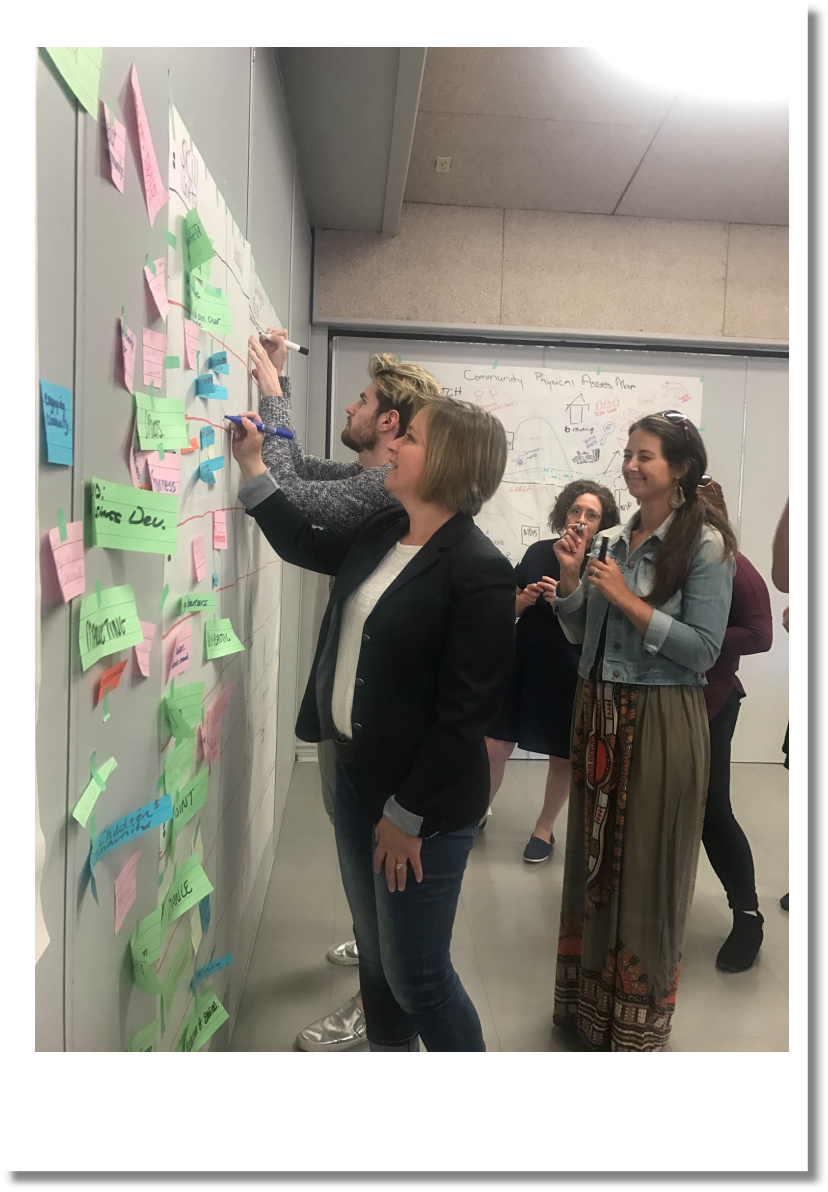 Underpinning Framework Examples:
Underpinning Framework Examples:
- Theory U
- Appreciative Inquiry
- Learning Conversations
- DEC Thinking
Once the Core Group has decided upon a framework and we have generated a list of ideas to include in the format, for e.g. guest speakers, dancing, collective inquiries, participatory discussions, art/craft etc., I take all of those ideas, hang them on the framework, utilising participatory practices and processes, and send a draft document back to the Core Group where they start offering some feedback and take notice of additions or omissions needed, timings to pay attention to and flow to smoothen out.
The Magic:
Then something magic always happens; as drafts go to and fro, people start to “drop in” and deepen their understanding of the co-design process and as their understanding deepens, excitement builds and people often offer more. Around this time, there comes a “tipping point” where the Core Group take ownership of the co-design and that’s my cue to lead, by stepping back… my role then becomes one of a monitor or “eagle” as I keep an eye on the detail; the tipping point encourages the role swap!
Thinking Design for Design Thinking:
When we’re “thinking about design” for a conversation, meeting, conference or event, we’re already in the space of “design thinking”. What this process offers is a way to shift a traditional framework where people might be being “spoken at” to a more inclusive process where people are at the centre and they are actively encouraged to participate and share their stories, ideas, challenges and barriers.
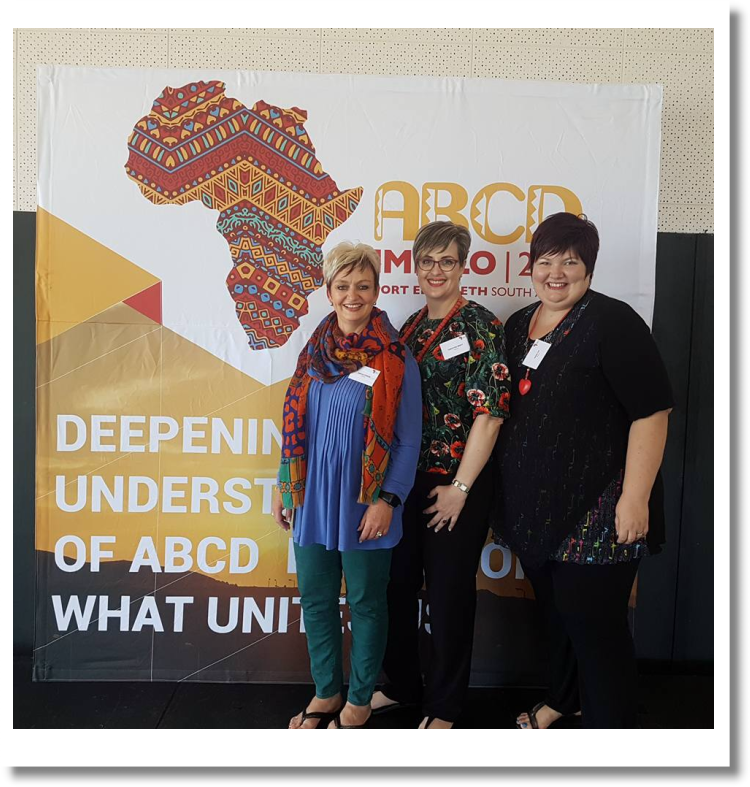 My Fail-Forward Work:
My Fail-Forward Work:
Each co-design is unique and is based on the skills, abilities, passions and offers of local people and attending participants. My goal is to support the co-design process from the first call, right throughout the event and beyond! Sometimes I facilitate at the event, sometimes I don’t… sometimes we have a day of design on the day before the event, sometimes we don’t… that depends on the group!
This way of working now shapes most of my work and the work of my Jeder community building colleagues. We have co-designed conferences with Core Groups, across multiple time zones, in the UK, India, New Zealand, Australia and South Africa. In addition, this way of co-designing has also guided our workshops and training offerings in ABCD, the Art of Hosting and the Art of Participatory Community Building in Indonesia, South Africa, Singapore, New Zealand, Australia, India, Greece and more…
From Me to We:
Working with others in deep design and open collaboration is rewarding and challenging both from an individual perspective and for the collective teaching and learning I gain each time. As for the patterns, practices and processes; everything old is new again; it’s not rocket science although, it is about how the Core Team trust each other and blend their skills and abilities together and how the final design is co-hosted and facilitated that brings traction and action to an inclusive, participatory event!

